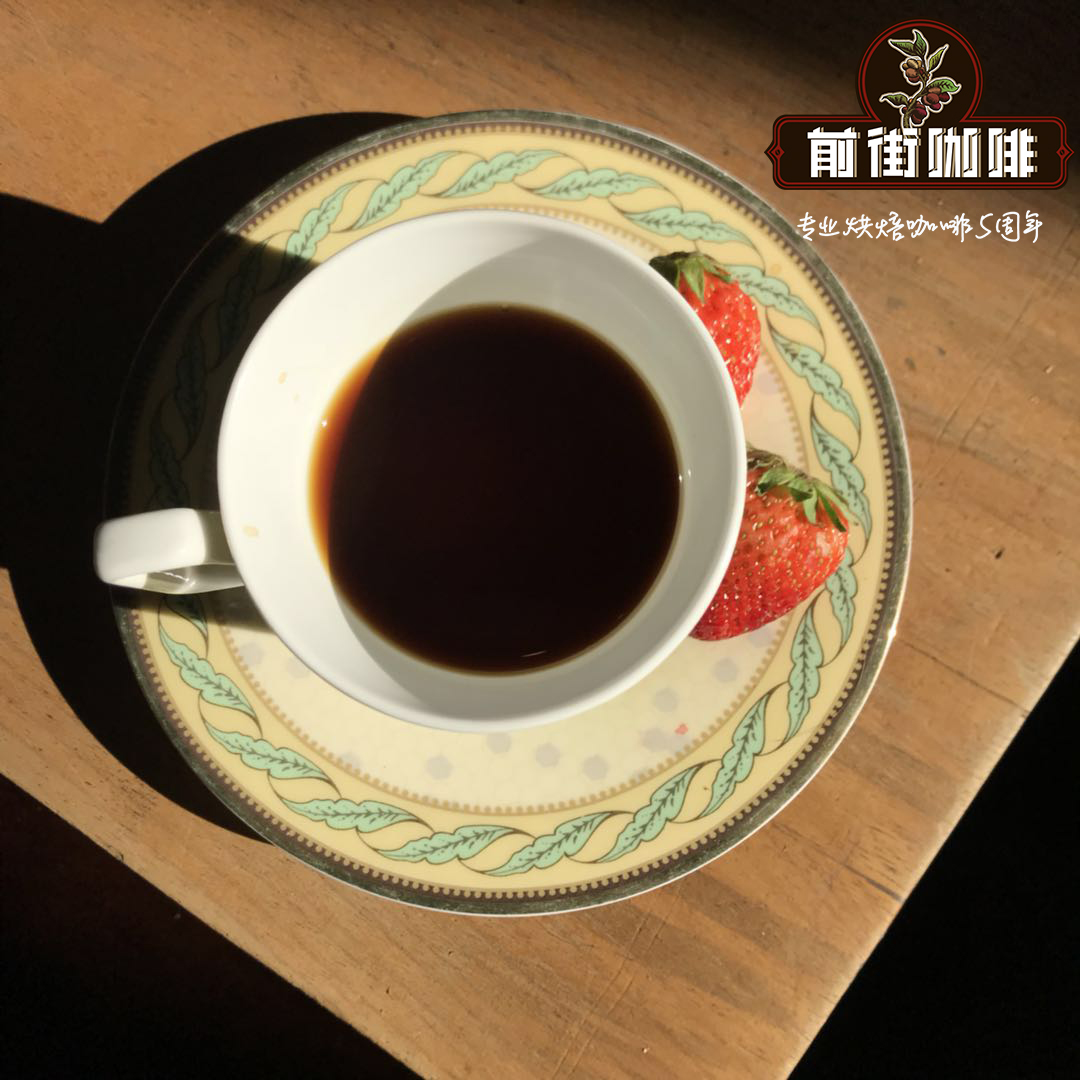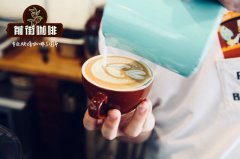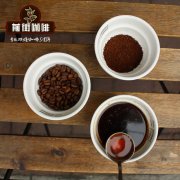How many degrees of water is best for high-quality coffee beans? How much water is the pure black coffee brewed? Boutique coffee beans

Professional coffee knowledge exchange more coffee bean information please follow the coffee workshop (Wechat official account cafe_style)
How many degrees of water is best for high-quality coffee beans? How much water is the pure black coffee brewed? How many degrees of water are used to brew boutique coffee beans?
After writing the French press, the actual operation of "dipping" has basically come to an end, leaving only the cold soaking pot to be discussed, and I intend to combine the cold soaking pot with iced coffee and introduce it later. Starting from this article, the "practical operation" series will begin to talk about "filtering".
Filtration is divided into pressure filtration and drip filtration, both of which have one thing in common and one difference. What they have in common is that, except for minor adjustments, it is basically difficult to change the contact time between the powder and the water; the difference is that the force that forces the water to pass through the coffee powder and filter material, the pressure filtration comes from the pump or vapor pressure, while the drip filtration depends only on gravity. The representative equipment of pressure filtration is Espresso coffee machine and mocha pot, and there are many kinds of dripping equipment, such as hand filter cup, flannelette filter bag, Chemex glass filter pot, electric filter pot, Naboliao, Vietnamese coffee filter cup and so on.
This article originally wanted to talk about the actual operation of hand-brewed coffee, but after consideration, I decided to talk about the basic principles of hand-brewing coffee first, leaving the actual operation to the next article. Some people may wonder why the theory of coffee conditioning has been introduced in the series of "making a good cup of coffee". My idea is like this: grinding, water temperature, time, ratio, these elements are related to each other, change one, will have a related impact on others, this involvement is particularly obvious in the conditioning of hand-made coffee. For example, fine grinding will slow down the speed at which water passes through coffee powder, coffee powder with poor freshness will reduce the time for water to pass through, and so on. Therefore, if you can have a deeper understanding of the basic principles, it will be easier to use in practice.
Before entering the discussion, I would like to make a suggestion:
"the most important key to making coffee by hand is not the brewing technique, but the grinding and the control of the water temperature."
Many people may not agree with this, but please take a patient look at the following instructions.
A long time ago, I thought about an interesting question: if you want to rate a near-perfect cup of hand-made coffee as 100, then the scores of all aspects of the conditioning process, such as grinding, water temperature, brewing techniques, etc., should be allocated in what proportion is more reasonable? Unfortunately, this kind of question usually can only resort to feeling, and it is difficult to give a scientific and quantifiable answer. The answer after my own reflection is that grinding and water temperature add up to about 80 points, and the remaining 20 points can be allocated to brewing techniques. When I put forward this idea in the May 4th Coffee Club, it was accepted by the members (or embarrassed to refute it), because every member has experienced that as long as we master the thickness and evenness of the grinding and make sure that the water temperature in the hand pot is appropriate, even if the brewing technique is not very skilled, you can still make a cup of delicious coffee (perhaps not perfect). This proves that brewing techniques are not the most important key to hand-brewing coffee.
The argument of reducing the importance of brewing techniques is bound to cause controversy and even infuriate a large number of coffee workers, because it seems to be a negation of their profession, but this is not my intention. After all, you need to have a good understanding of coffee in order to deal with the details such as grinding and water temperature properly. I would like to emphasize that to complete a successful cup of hand-brewed coffee, you should first score the relatively easy 80 points, and then use beautiful tricks to push the brewing to perfection in the remaining 20 points.
So next, we should study carefully, account for 80 points of hand coffee, grinding and water temperature, what are the details that should be paid attention to.
First of all, the thickness of coffee particles.
In the essay "making a good cup of coffee (2)", grinding size was introduced. For example, for a hand filter cup that uses a paper filter, the ideal grinding is about 500 murmur600 microns, but it must be adjusted according to three key points:
According to the actual feeling of tasting
If the coffee is bitter and astringent and the tongue feels "dry", it usually means that the coffee is ground too fine and the extraction is a little too much; on the contrary, if the coffee is light or feels a little "watery", it is probably too coarse and not enough to extract.
According to the amount of powder
The suitable thickness for brewing one or two cups of coffee may be too fine if it is used to brew a large pot (5, 6 cups or more), because increasing the number of cups will increase the amount of coffee powder, increase the thickness of the powder, and increase the resistance of water to pass through. As a result, the contact time between water and coffee powder will be prolonged. So when the amount of bubbling increases, the size of the grinding should be slightly enlarged.
According to the freshness
Beans that are too fresh should be slightly thicker to grind, while beans with poor freshness should be ground finer. This is because when coffee particles come into contact with hot water, they will release internal gas and produce foam; most of the foam will float on the liquid surface, forming "coffee flowers", but some of them will be mixed inside the coffee mud bed, increasing the hindrance to the passage of water, thus prolonging the contact time between water and coffee powder. The more fresh the beans are and the more bubbles there are, the more obvious the blocking phenomenon will be. Therefore, it is a common practice for experts to adjust the grinding thickness appropriately according to the freshness of coffee. However, how to set the criteria for determining the freshness of coffee? Here, I will provide my practice in the May 4th Coffee Club for readers' reference. I usually only classify beans no more than 3 days after roasting as "extremely fresh", beans more than 7 or 8 days after roasting as "less fresh", and those in between as "normal". If the "normal" bean chooses the grinding scale of "4", then in the other two cases, one chooses "4.5" and the other chooses "3.5".
Secondly, the uniformity of grinding.
In an ideal grinding, it is best to grind each coffee particle of the same size and shape, so that the uniformity can be best when brewing. But in fact, no matter what kind of grinder you use, you can't do this. No matter how high-end the grinder is, the coffee powder will inevitably contain a little thicker particles and too fine powder, in which the coarse particles are relatively easy to flash, and the dust is absolutely difficult to avoid. If the amount of these too coarse or too fine particles is small, the problem is not serious, and if there is more, there will be a phenomenon of "some particles are not fully extracted, but there is already some excessive dust extraction" [Note 1]. So it is very important to make the coffee particles as big as possible. But to do this, there are probably only two feasible ways, one is to buy a relatively high-end grinding machine to improve grinding uniformity, and the other is to purchase a powder sieve as an auxiliary. I am more in favor of the first of these two methods, because it takes an extra expense to buy a powder sieve, and the aroma of fresh coffee is more or less sacrificed in the process of sieving, while buying a high-end grinder, but only once the heartache (and may have to hide the true price to the other half).
Finally, the temperature of the water when brewing.
In Taiwan, this is probably the most divergent point of opinion. Many people, including many in the industry, tend to use hot water with a lower temperature, about 85 degrees Celsius and 90 degrees Celsius, to brew coffee, which is a far cry from the 92muri 96 degrees recommended by foreign experts. I have repeatedly tested the brewing effect of different temperatures, and concluded that 92muri 96 degrees is indeed more ideal, and later wrote this point in "making a good cup of coffee (3)", which can be referred to by interested readers. In addition, take a look at the World Cup Cooking Competition (WBrC) held in Dublin this year (2016). As recorded by Sprudge Media Network, the six players who reached the finals each used water during brewing:
First place, Japan, Tetsu Kasuya, unknown
Second place, Finland, Mikaela Wallgren,96 degree
Third place, Taiwan, Wang ce, 92 degrees
Fourth place, Hong Kong, Benny Wong,94 degree
Fifth, the United States, Todd Goldsworthy,95 degrees; sixth, Norway, Odd-Steinar T ø llefsen,90 degrees.
Apart from being unable to find out the water temperature data of the Japanese players, I wonder if the Norwegian players have been lowered by the referee because of the use of 90-degree water.
There is something to be added about the temperature of the water.
How to handle the temperature range of 92murmur96? The principles are roughly as follows: if the water temperature is on the high side, the extraction rate will increase, regardless of the sour taste, bitterness, astringency and concentration; if the water temperature is low, the extraction rate will decrease, but in terms of ratio, the bitterness and astringency will decrease more, and the sour taste is easier to highlight.
Although 92murmur96 degrees is recognized by most people, eating is a very personal behavior. If you think 85mur90 degrees is your favorite temperature, you don't have to listen to what others say, just do it the way you like it. However, I suggest that occasionally try 93 degrees of hot water for hand flushing, maybe it will change your point of view.
Four factors affecting the flavor and taste of coffee
Water temperature:
1. Extraction efficiency: the temperature of water affects the extraction efficiency of coffee. If the coffee is too bitter and scorched, try lowering the temperature. On the other hand, if you feel that there is still a lot of flavor unreleased, you can consider raising the temperature. two。 The development of the powder layer: another noteworthy place is the development of the powder layer. The powder layer contains bubbles, which are full of coffee liquid and air. The denser the bubbles, the better the effect of soaking in the filter droplets. In the case of shallow baked beans or grinding too fine, the powder layer is not easy to expand, we can consider increasing the water temperature to assist the development of the powder layer.
Grinding thickness
The thickness of powder has a high influence on the flow rate and the development of powder layer. Extraction efficiency: the finer the grinding, the more the number of particles, the greater the extraction efficiency. two。 Powder layer development: usually the fresher the coffee beans, the better the powder layer will swell. However, if the grinding is too rough, because the water passes quickly, it is disadvantageous to the development of the powder layer. When grinding is too fine, because the water is not easy to pass, it will get stuck on the powder, and the development of the powder layer is not good, so the appropriate grinding thickness must be used. (in the case of Pegasus and Eagle, about 3.0 Murray 3.5)
Baking degree
1. Shallow roasting: shallow roasted coffee beans are relatively dense, it is recommended to use a high temperature of more than 90 ℃ and a smaller water column, so it is easier to rush out the flavor. two。 Deep baking: the deeper the baking, the looser the tissue structure, the faster the extraction efficiency of soluble matter, the better water absorption, the powder layer is easy to expand by water, but the bitter taste is relatively heavy. 3. Therefore, the suggestions on the degree of baking and temperature are as follows: shallow baking: the temperature is about 90murmur92 degrees. After boiling, pour into a copper pot and bake deeply: the temperature is about 88mur90.
Soaking time
1. Extraction efficiency: the longer the soaking time, the greater the extraction efficiency. two。 The overall cooking time is about 3 minutes, and the size of the water column can be adjusted as close to the target time as possible.
[time and flavor of extraction]
It is not that the more ingredients are extracted, the better, just like tea soaked in hot water, the shorter the time, the more tasteless; but for a long time, it is prone to miscellaneous taste, astringency and other uncomfortable taste. The goal of our extraction is to find the most suitable point, so that there is more pleasant taste and less uncomfortable taste as much as possible.
Important Notice :
前街咖啡 FrontStreet Coffee has moved to new addredd:
FrontStreet Coffee Address: 315,Donghua East Road,GuangZhou
Tel:020 38364473
- Prev

How much water does it take to make a single cup of coffee? How many degrees of blisters do you use to make coffee by hand? How much is the black coffee?
Professional coffee knowledge exchange more coffee bean information please follow the coffee workshop (Wechat official account cafe_style) how much water does it take to make individual coffee? How many degrees of blisters do you use to make coffee by hand? Black coffee how much water brew how to brew? Drinking coffee is really just a way of life. When it comes to coffee, always say carefully that you don't understand, even if you drink it, you just drink it casually.
- Next

How much water does it take to brew boutique coffee beans? What's the temperature of the water to make coffee? For making black coffee
Professional coffee knowledge exchange more information about coffee beans Please follow the coffee workshop (Wechat official account cafe_style) how much water is used to brew boutique coffee beans? What's the temperature of the water to make coffee? How much water does it take to make black coffee? As a new favorite of the third wave of coffee reform, hand-brewed coffee has become a personalized way for baristas to express themselves. Different baristas use their hands to extract.
Related
- Detailed explanation of Jadeite planting Land in Panamanian Jadeite Manor introduction to the grading system of Jadeite competitive bidding, Red bid, Green bid and Rose Summer
- Story of Coffee planting in Brenka region of Costa Rica Stonehenge Manor anaerobic heavy honey treatment of flavor mouth
- What's on the barrel of Blue Mountain Coffee beans?
- Can American coffee also pull flowers? How to use hot American style to pull out a good-looking pattern?
- Can you make a cold extract with coffee beans? What is the right proportion for cold-extracted coffee formula?
- Indonesian PWN Gold Mandrine Coffee Origin Features Flavor How to Chong? Mandolin coffee is American.
- A brief introduction to the flavor characteristics of Brazilian yellow bourbon coffee beans
- What is the effect of different water quality on the flavor of cold-extracted coffee? What kind of water is best for brewing coffee?
- Why do you think of Rose Summer whenever you mention Panamanian coffee?
- Introduction to the characteristics of authentic blue mountain coffee bean producing areas? What is the CIB Coffee Authority in Jamaica?

